Phase 3 Details
Purchase of Expeditor 339
Purchase of Aircraft Parts
MRP Survey
Purchase of Expeditor 339
After purchasing Expeditor 426, Balodis was looking around for parts and other technical data to get his airplane back in the air.
There is a web page – Beech18.net – which is a center for information and discussion on Beech 18s. He posted a few quick questions on the discussion board. A response came back almost instantly containing some suggestions on how to fix some of the problems that he had with Expeditor 426.
However, there was also another response telling him about another Expeditor for sale, and that it could be used for parts.
Unfortunately, this response came at exactly the wrong time. Balodis was in the process of his Trade Training Course for the Canadian Forces – also known as his QL3’s – and, as a result, he was rather busy during that time.
It took some time for him to get back to the person that responded to him, but he did and the person was still there, patiently waiting. The person explained that he knew of a mechanic who was selling an Expeditor in Redditt, Ontario (located just north of Kenora, Ontario).
So, a telephone call was made, an offer was tabled and accepted – and the rest is history!
Purchase of Aircraft Parts
President Mark Balodis recently made a trip to Southwestern Aero Exchange in Oklahoma to procure parts for the aircraft. Below are his diary entries and photos from that trip:
Day 1
(In the Air over the USA)
En route to Tulsa, I noticed a couple of things that made my smile about the airplane that I’m flying in – the “Canadair” label and the CRJ 200 sticker on her. (What a hoot!)
I’ve spent a good deal of time en route to Owasso reviewing parts of different EO’s, looking up procedures – making sure that I really know what I’m looking at and how best to remove parts safely.
Stopping to think about it, it has been quite the journey to get this far, with regards to restoring Expeditor 426 to “S”, or “serviceable” status. From a sunny field at the corner of former CFB Gimli to a small commuter jet en route to Tulsa, Oklahoma – all the research done – all the work that has been completed by everyone – all the work that is still ongoing…it’s truly amazing.
All that knowledge coupled with the fact that I’m the advance party doing the recce – for this is not the last of my trips in search of Beech 18 parts. Far from it, as a matter of fact. This will probably be a yearly trip, for where else can I get quality parts and service?
What’s also interesting about this trip is it’s the first company trip to the United States. The first ever business trip was last summer when I did a Mobile Repair Party (or MRP) survey of Expeditor 426. I’ve done a lot of research (averaging between 8 to 10 hours a week) and I’m still learning more about the Expeditor. However, something tells me that I have just scratched the surface in the vast topic of successful Expeditor maintenance and flight.
It’s rather interesting, you know. The more I learn, the more questions that I have, resulting in the more that I learn….and on and on. Honestly, it’s beginning to feel like a never ending cycle, and that sounds fine to me – because I really like the Expeditor!
Day 2
(At Southwestern Aero Exchange)
Being a Canadian Airforce Mechanic, and familiar with the supply building (and how well organized it is) and the supply system in the Canadian military, I should have been better prepared for what I found in Owasso.
I was expecting the aeronautical version of a junkyard, where I pull parts off and package them up.
What I got couldn’t be further from the truth.
There are two warehouses (averaging about 75 feet wide by 100 feet long – one of them is three stories) just filled with Beech 18 parts. And, I would be doing a disservice to both Dave Warren (and his daughter Shelley) if I didn’t mention just how highly organized absolutely everything is.
You give Shelley the part number, she punches it into her computer and it gives the exact bin location and quantity that will be there – every single time! (And many of these parts are still in the original military grade protective paper.)
As a matter of fact, when I was looking for Beech 18 tools, I found a couple that still had the old RCAF E33 tag on them. (The E33 tag was the precursor to the current “Rainbow tag” style that is being used.) Even the Emergency hatch that I purchased still had the old RCAF Lightning Bolt on it, with the “Air Transport Command” letters still on the side!
The amount of organization, the preparation that went into this operation – the foresight especially! – is just overwhelming. These days, Beech 18 parts are becoming harder and harder to find. (As a matter of fact, they would be a lot harder to find if Dave Warren hadn’t put all his efforts and talents into making his business.)
Boiled down – first impressions are truly overwhelming!
Day 3
(At Southwestern Aero Exchange)
With regret, it’s coming close to the time that I have to leave.
True, I’ve done all that I came here to do – namely get some “Tool Crib Tools” plus the hatches and the like to close in Expeditor 339. (My reasoning for wanting to close in Expeditor 339 is the term that is being used to describe her is a “rob bird” – and speaking from my Canadian Air Force experience, that says quite a lot.)
There is so much more that I’d like to get, so many more questions to ask, and so many more projects to start.
However, what I’ve got is a good beginning – but I will definitely be back next year for more parts!

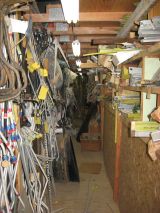
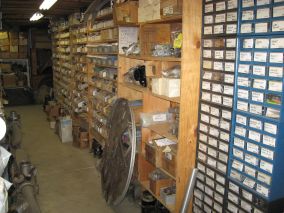
MRP Survey
The first MRP, or Mobile Repair Party, for Time Travel Air was organized, planned, and executed during the last week of August in 2008. Seeing that it was the first MRP, the learning curve was quite steep with respect to many things, but especially for timings. Above all, it marked the transition from a theoretical world of research that had been prevalent to the practical maintenance world, where answers to questions had to be given in real time.
Organizing the first MRP was more than a little daunting, considering that I had no experience at it. All of a sudden, I was the Subject Matter Expert - or SME – that had to have all the answers right away to any potential questions that may suddenly appear at any time. The airplane tickets, the accommodations, the transportation, the tools, the manuals – all these issues had to be addressed and answers had to be produced before we could go on this trip.
The saving grace for this MRP was the number of people involved – just myself and Pat Alber.
Having said that, there were a number of things that we had to get done, and most of them involved doing a lot of travelling and making our timings. For this MRP, we had to travel to Winnipeg (from Halifax), we had to get a large UHaul Truck, make the airplane safe to work on (and do a quick survey of it), move some airplane parts, and then go home. (I knew that there were a number of parts included with the sale of the airplane, and I wanted to move most of them to Gimli where my other parts were located.)
However, the only fly in the ointment was the fact that I had slept in and missed the flight out to Winnipeg! Thankfully, we were able to work around that – and I didn’t miss a single timing after that!! – but it made for an interesting beginning to the MRP, to say the least.
Pat and I arrived in Redditt (located just north of Kenora) quite late after a long day of travelling. Thankfully, Rollie Hammerstadt - the man who I had purchased the airplane from - and his wife graciously put us up for the week at their house. While Pat and I were in Redditt, there were a number of things that we had to so to make the airplane safe for us to work on it. Most importantly was removing the aircraft’s fuel tanks and propeller feathering pumps. Another important tasking that we had to do when we were there was the removal of the cabin floor. (The reason for that was for us to check to see if we had a corrosion issue – thankfully, we didn’t.)
After we had completed those tasks, we then loaded up a fair amount of parts into the back of the UHaul truck. (The idea was we would move some parts to Gimli, where they would be shipped back to where I was one at a time.) Somewhere in the middle of this trip, time was made to go to the Western Canadian Aviation Museum to do more research. (And, thankfully we did – WCAM had the Airframe Type Course Manual for the Expeditor!) We also made the time to visit with my Chief Pilot, James Gosselin and his family.
All in all, the MRP was a success with all the required tasking completed.
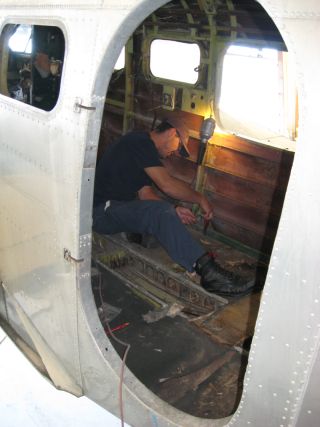
Pat Alber working on cabin floor.

MWJ Balodis beginning to take inventory.
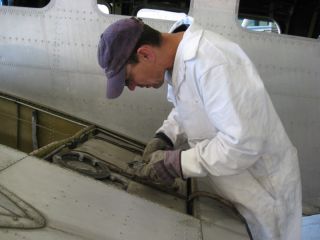
Pat Alber removing port auxiliary fuel tank.
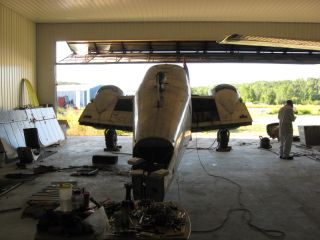
Profile shot of Expeditor 339 in August 2008.
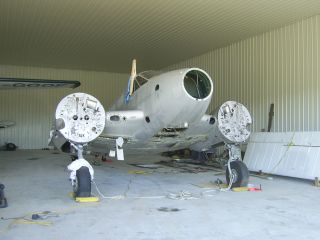
Front shot of Expeditor 339 in Augest 2008.
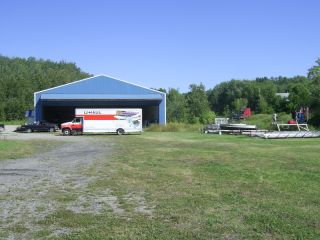
Redditt airport in August 2008.








